Tesla’s Brazen Disregard for Workers’ Well-Being Revealed
A new investigation details how the automaker conspired with a doctor at a nearby clinic, to the detriment of those injured on the job.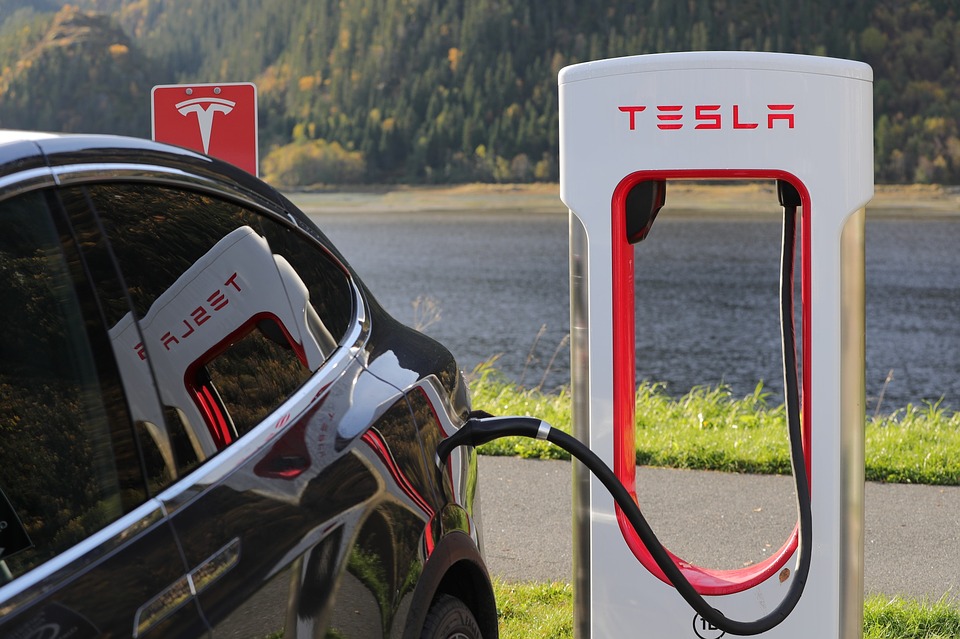 Pixabay
Pixabay
Inside a medical clinic not far from Tesla’s electric car factory, Yvette Bonnet started noting a troubling pattern. The automaker’s workers’ compensation manager would pressure her boss, Dr. Basil Besh, to make sure Tesla wasn’t on the hook for certain injured workers.
And in her observation, Besh did whatever he could to not jeopardize his chance to run Tesla’s on-site factory clinic.
“He would say, ‘I’m not losing the contract over this – get this case closed,’” said Bonnet, who was operations manager for Besh’s Access Omnicare clinic in Fremont, California, for about a year.
“Besh wanted to make certain that we were doing what Tesla wanted so badly,” she said. “He got the priorities messed up. It’s supposed to be patients first.”
It’s not unusual for employers to be pushy about how they want their workers’ injuries handled, Bonnet said. But the intensity of Tesla’s pressure, she said, combined with Besh’s willingness to let bottom-line concerns influence clinical decisions, made this situation different from any Bonnet had encountered.
Reveal from The Center for Investigative Reporting previously reported that Tesla systemically kept worker injuries off the books, artificially improving its safety record and violating the law on recording workplace injuries. We also showed that Tesla’s medical clinic ignored worker injuries, sending the hurt back to work without proper treatment and helping the company claim publicly that it had improved. Besh said in an interview last year that Tesla doesn’t pressure him to dismiss injuries and that his determinations are “only based on what the patient needs.”
However, interviews with former clinic employees and internal clinic communications show how Tesla and Besh coordinated behind the scenes in an arrangement that financially benefited both the carmaker and the doctor, to the detriment of the injured. Neither Tesla nor Besh responded to questions for this story.
Besh’s clinic had been struggling to make money, according to former employees. They say business dropped off when Tesla, previously Access Omnicare’s top client, opened an on-site factory clinic managed by another company in 2016.
But as Tesla took heat for how often its factory workers were getting injured, Access Omnicare got a chance to win back Tesla’s business, to take over its on-site clinic. In December 2017, Tesla sent a patient, Bill Casillas, to Besh as part of a trial run of sorts.
Casillas, a worker at Tesla’s seat factory, had felt a strong shock when he touched a forklift there. Disoriented, he realized he had urinated on himself. A co-worker in the forklift saw it jolt Casillas back and told Reveal that it “seemed like it was affecting him greatly.” Casillas’ partner said he came home shaken, unlike she had ever seen him before. He was left with relentless pain, numbness and balance problems, he said.
An internal Tesla incident report documented a work injury due to “shock from an electrical forklift” that was then put out of service. Kaiser Permanente doctors who examined him the day after the incident diagnosed him with an industrial “electrocution.” A doctor at Besh’s clinic agreed that it was a work-related electrical injury, prescribing him limited job duties, physical therapy and additional tests, medical records show.
But Tesla didn’t like the diagnosis, Bonnet said. She got an email from Tesla’s workers’ compensation manager, Amir Sharifi. He argued that there wasn’t a work injury at all – just a case of minor static electricity.
Bonnet relayed the message to Besh, who “came stomping over in a huff,” Bonnet recalled. She said he angrily confronted the physician treating Casillas, echoing Sharifi’s static electricity argument. He complained the tests cost too much and told the doctor to discharge Casillas, Bonnet said. Afterward, the doctor told Bonnet that she didn’t agree. Upset with the doctor’s handling of the case, Besh asked Bonnet to stop scheduling her to work at Access Omnicare, Bonnet said.
That’s when another one of Besh’s physicians, Dr. Muhannad Hafi, stepped in and did as Tesla wished. Hafi was in a vulnerable position. He’d been publicly accused of sexually assaulting two female patients at previous jobs. The California Medical Board had moved to take away his license.
“I have spoken again with Mr. Sharifi at Tesla and he informed that the forklift did not have electric current running,” Hafi wrote. “With that said, in my medical opinion, the patient does not have an industrial injury attributed to an electrical current.” He went so far as to say Casillas didn’t have any symptoms of concern.
Casillas’ workers’ comp claim was denied based on Hafi’s January 2018 report, a decision being fought by Casillas’ lawyer, Sue Borg. A doctor conducting an independent medical examination as part of that process wrote in November that it was a “very complex case” and “difficult to determine” whether Casillas was suffering from an electrical injury.
Casillas said he still walks with a cane, is out of work because of the injury and needs government disability benefits to get by. Because of the denial, he said, Tesla stopped paying for his time off work.
“I was just speechless,” he said.
Besh, a prominent hand surgeon who also runs a surgery center and hosts political fundraisers at his home, used the Casillas case in negotiations with Tesla, Bonnet said. She recalled him telling Tesla that if he was in charge of the factory clinic, Casillas’ case wouldn’t have gotten as far as it did.
The week after Hafi discharged Casillas, at the beginning of February 2018, Tesla met with Access Omnicare.
“How was the meeting today?” Amirra Besh, the doctor’s wife and clinic administrator, texted Bonnet.
“GREAT!” Bonnet responded, saying Tesla agreed to start referring all MRI’s and pre-employment physicals to Access Omnicare.
In her reply, Amirra Besh sounded excited for the work ahead. “Excellent!” she texted. “Time to deliver.”
***
The workers’ compensation system involves a fundamental tradeoff: Companies must provide medical treatment and benefits to injured employees, who then can’t sue over the injuries.
Workers’ comp fraud is usually associated with workers faking injuries or clinics billing for sham services. But the law also prohibits employers from fraudulently denying a claim or discouraging a worker from pursuing one. Those caught can face fines and jail time.
Physicians can disagree on what’s necessary to treat an injury. But if they’re being pressured to change a diagnosis to avoid a legitimate workers’ comp claim, “it could be both unethical and illegal on multiple levels,” said Dale Banda, vice president of the Anti-Fraud Alliance and former deputy commissioner of the California Department of Insurance’s enforcement branch.
Many employers have an incentive to keep down workers’ comp claims because it lowers their insurance premiums. Insurance companies pay out the benefits but charge employers based in part on the number of successful claims.
Tesla has even more at stake because it has a form of self-insurance. The company is directly on the hook for paying up to $750,000 of each worker’s claim, records show.
A serious injury easily could cost the company tens of thousands of dollars. In a factory with hundreds of injuries a year – Tesla recorded 947 in 2018 – that could add up to significant damage, especially for a company struggling to be profitable. Tesla recently closed some of its retail stores and laid off employees to control costs.
One way to keep costs down is to avoid having claims in the first place. Multiple former employees said Tesla has at times failed to give injured workers the official form to file a workers’ compensation claim. California law requires employers to provide the form, called a DWC 1, within one day of learning of an injury.
Anna Watson, a physician assistant who worked in the Tesla factory clinic in August, said she wasn’t allowed to give injured workers medical treatment or job restrictions, even when they clearly needed it.
“Everybody leaves this clinic as first aid,” Watson said she was told. Employers don’t need to provide a claim form for injuries that require only first aid.
Laurie Shelby, Tesla’s vice president for environment, health and safety, recently told state officials, “We set up a process to ensure that our employees receive the proper paperwork and care.” But this, too, is contradicted by the accounts of former employees.
In March 2018, Vicki Salvador was at the end of her 12-hour overnight shift in Tesla’s paint department when she tripped on her overly long full-body paint suit.
The fall broke a bone in her hand, she said. Salvador went to the emergency room, where she got a splint. She was told that she should see a specialist but needed to have Tesla handle it from then on because it was a work injury. She still owes $100 for the hospital visit.
Salvador’s supervisor put her on light duty for a few weeks, she said. But even though she asked about workers’ compensation at the time, no one followed up or gave her a claim form, she said.
“At that point, I gave up because I felt like anything I said, I was in jeopardy of losing my job,” said Salvador, echoing a common worry among Tesla workers. She says she was fired in January after tweeting about how many cars were coming through the factory.
Stephon Nelson gave up, too. He suffered a crushing injury in August when the hatchback of a Model X fell on his back. The on-site medical clinic kept sending him back to work full duty, even though he could barely walk.
Eventually, Access Omnicare diagnosed him with intractable back pain and contusions, medical records show. Nelson said he asked for a workers’ comp claim form from his supervisor, the factory clinic and Tesla human resources, but no one gave him one.
“I just knew after the third or fourth time that they weren’t going to do anything about it,” Nelson said. “I was very frustrated. I was upset.’”
Nelson quit Tesla in September. Now he’s on the hook for more than a thousand dollars in hospital visits. He said he doesn’t know how he’ll pay it.
***
When Tesla flagged a case, Dr. Basil Besh jumped on it, Yvette Bonnet said.
In some cases, he ordered his medical staff to reverse course and change diagnoses and job restrictions to make the automaker happy, Bonnet said. In others, he’d take action himself.
One Tesla worker came into the clinic with a skin rash, Bonnet remembered. Amir Sharifi, Tesla’s workers’ compensation manager, told the clinic that it couldn’t have come from a work exposure. Normally, one of Besh’s providers would have seen the patient, but Besh intervened personally. Bonnet said she was there when he confronted the patient, without having examined the worker or reviewed his medical records.
“He went right into the room with that guy, and he said there’s no way this happened at work,” she said. “He had already decided before he went in that he was going to shut this guy down.”
A couple of text messages from Bonnet’s time at the clinic hint at Sharifi’s involvement.
In one, Amirra Besh wrote, “Tesla patient with alleged ‘mold’ exposure, Amir sending an email.” It notes that only a specific doctor, who “has been briefed,” should see the patient. Bonnet said this was a way for Tesla to influence the case.
In the end, Access Omnicare won the Tesla contract.
Besh, in an interview last year, said Tesla pressures him only on “accurate documentation.”
“What they’ll push back on is, ‘Doctor, I need more clarity on this report.’ And we do that for them,” Besh said.
Besh took over the factory clinic in June. Bonnet was fired the next month after clashing with Besh. Dr. Muhannad Hafi, who dismissed the electrical injury, also left Access Omnicare and later lost his medical license as a result of the sexual misconduct accusations.
Shelby, Tesla’s vice president for safety, gushed about the clinic on an earnings call in October, saying it provides “the absolute best care for our associates” and is overseen by “one of California’s leading orthopedic surgeons.”
CEO Elon Musk jumped in to add that Tesla will expand on it at Fremont and at Tesla’s Nevada battery plant, “so that we have really immediate first-class health care available right on the spot when people need it.”
“If you become injured or ill for any reason,” he said, “then there’s health care immediately on-site.”
This story was edited by Andrew Donohue and Matt Thompson and copy edited by Nikki Frick.
Will Evans can be reached at [email protected]. Follow him on Twitter: @willCIR.
Your support is crucial…With an uncertain future and a new administration casting doubt on press freedoms, the danger is clear: The truth is at risk.
Now is the time to give. Your tax-deductible support allows us to dig deeper, delivering fearless investigative reporting and analysis that exposes what’s really happening — without compromise.
Stand with our courageous journalists. Donate today to protect a free press, uphold democracy and unearth untold stories.
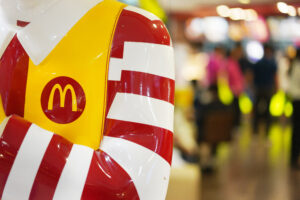
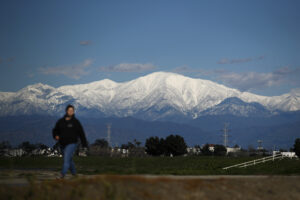
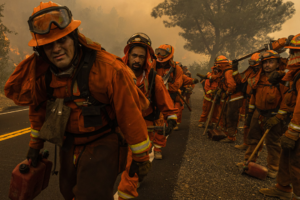
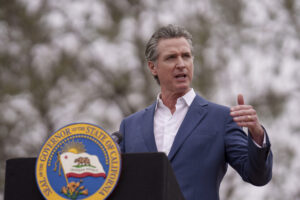


You need to be a supporter to comment.
There are currently no responses to this article.
Be the first to respond.